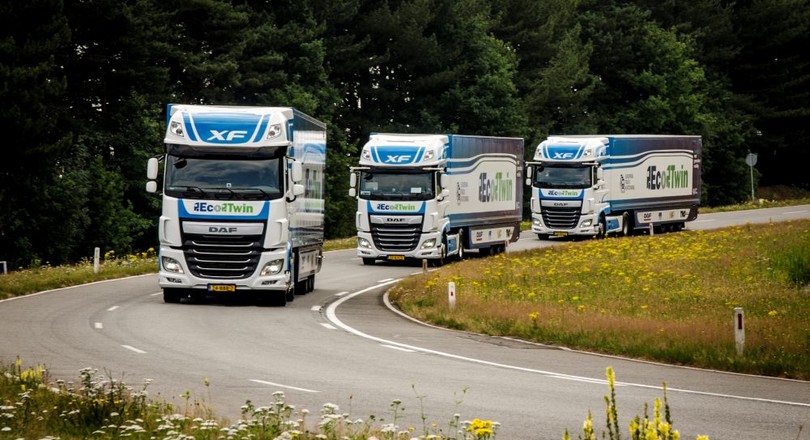
TNO and partners have managed to get trucks to travel in procession at a mutual distance of 0.3 seconds. This is close enough that technology has to be used to guarantee the safety of braking and steering, as drivers can never respond quickly enough.
Getting trucks to travel in procession is nothing new. Just last year, under the Platooning Challenge, processions from four countries drove through Europe to Rotterdam (read: ‘Trucks driving in procession today in Rotterdam’).
Just seven metres
One of the benefits of platooning is the lower air resistance, leading to lower fuel consumption. The trucks that follow benefit from their forerunner, while the leading truck suffers less from its wake – the vortex of air that acts as a brake behind a truck. ‘Multiple tests indicate that the mutual distance between the trucks determines how much fuel is saved: at distances greater than ten metres, the effect is clearly lower than at distances of less than ten metres’, said TNO Project Leader Eymert van Rooij. Together with truck manufacturer DAF, chip manufacturer NXP, and safety specialist Ricardo, the EcoTwin project has been 18 months in the making. ‘We wanted this project to demonstrate that it’s possible to drive at a mutual distance of 0.3 seconds, some seven metres.’
Mutual communication
The key consequence of such a short distance is the response time. ‘Even when the driver is sitting with his hands on the steering wheel and his foot on the brake, the distance is too short for him to react in time.’ But mutual communication between the trucks makes it possible: when the frontrunner brakes, all the followers brake, and the same goes for acceleration. ‘And that brings us to a further benefit of platooning: the driving behaviour is much more regular, and that saves fuel too. Van Rooij cannot yet provide any hard figures for the fuel savings generated by driving so close together. ‘We’ll have to do practical trials, as roadside conditions vary enormously: sometimes there’s no undergrowth, or there’s a high noise barrier, and the impact of this has yet to be factored in.’
Safety
Over this last year, we’ve focused primarily on building a reliable operating system, improving communication between the trucks, embedding monitoring systems into the control and communication systems, and ensuring safety in the event part of the system fails. ‘The system has been tested thoroughly, and what we now need are extensive practical trials.’
According to Rooij, this not only involves showing how great the practical benefits are of truck platooning, but must also lead to acceptance by fellow road users. ‘Won’t car drivers be shocked to see trucks driving so close together? For that reason, I expect that in the initial trials, the trucks will have to keep a greater distance than seven metres. And we need to counter the idea that you'll have to wait for an endless row of platooning trucks to pass before you can join the motorway. ‘The system is designed in such a way that the trucks create space on the approach to a slip road, and once the incoming vehicle has moved on, the trucks once again bunch up.’
Trials on the public highway
For the time being, we'll have to wait for such extensive trials. ‘We've had plenty of pilots, and now need large-scale trials on public highways.’ And that's a huge challenge for hauliers, while research institutes like TNO are also not able to organise it all themselves. ‘We need a common initiative to ensure further progress in platooning.’
If you found this article interesting, then subscribe for free to our weekly newsletter.
Nieuwsbrief
Vond je dit een interessant artikel, abonneer je dan gratis op onze wekelijkse nieuwsbrief.

